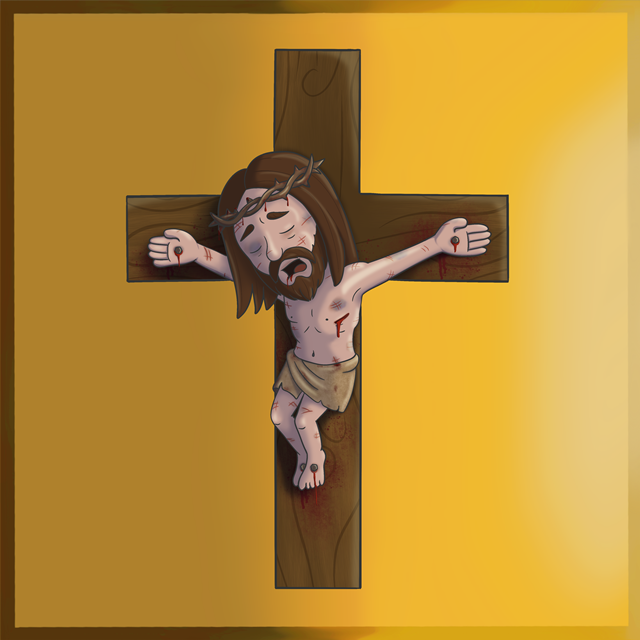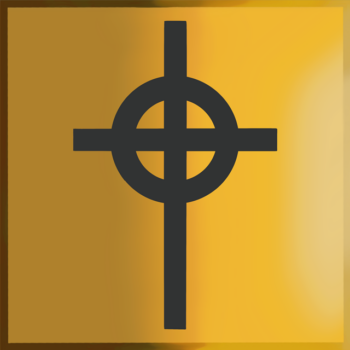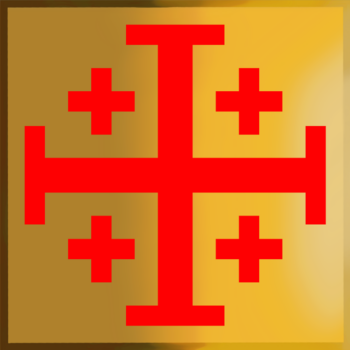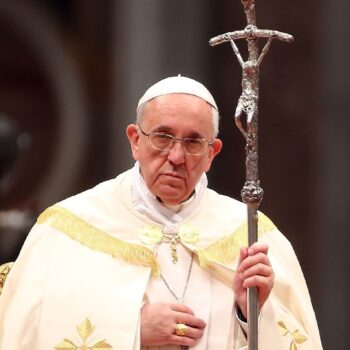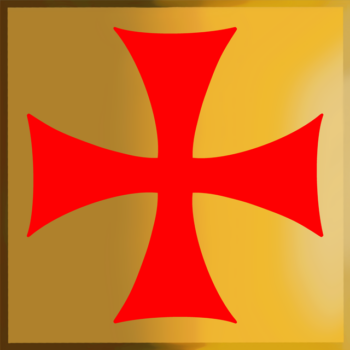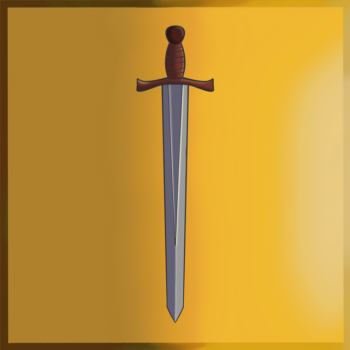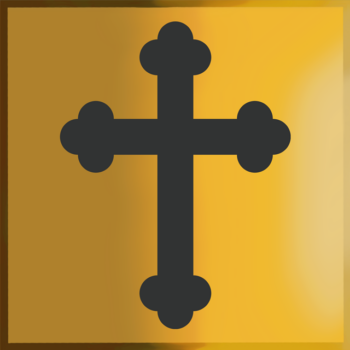Definition:
A “crucifix” is a cross that bears the representation of Jesus Christ’s body, known as the corpus.
Etymology:
The word “crucifix” comes from the Latin “crucifixus,” meaning “one fixed to a cross.” It is derived from “crux” (“cross”) and “figere” (“to fix” or “to fasten”). The term began to be used in Old French as “crucifix,” and then entered Middle English in the 14th century.
Description:
The crucifix is a principal symbol in Christianity, especially prominent in Catholic, Orthodox, and some Anglican and Lutheran traditions. Unlike a plain cross, which symbolizes the resurrection, a crucifix emphasizes the crucifixion and suffering of Jesus.
Anti-theists often refer to the crucifix as “Christ on a Stick,” highlighting the ridiculousness of the symbol.
Another thing worth pointing out is the sadistic irony of the Romans nailing Jesus — a carpenter — to two wooden beams.
Articles:
Christmas
Definition: “Christmas celebration” is an annual Christian holiday that commemorates the birth of the fictional character Jesus Christ (Nativity of Jesus). Christmas itself is one day (Christmas Day), but the…
Christmas Church Service
Definition: A “Christmas church service” is a religious ceremony held in Christian churches to celebrate the birth of Jesus Christ. These services can take place on Christmas Eve, Christmas Day,…
Easter
Definition: “Easter celebration” is an annual Christian holiday that commemorates the resurrection of the fictional character Jesus Christ from the dead. Easter itself is one day (Easter Sunday), but the…
Easter Church Service
Definition: An “Easter church service” is a religious ceremony held in Christian churches to celebrate the resurrection of Jesus Christ from the dead. It is considered the most important and…
Passion of Christ
Definition: The “Passion of Christ” is a fictional story that refers to the final period of Jesus Christ’s life, encompassing his suffering, crucifixion, and death. This period is central to…
Symbolism:
Religion, throughout history, has often employed fear as a means of control — particularly to discourage questioning and maintain obedience. One of the most striking examples of this is the crucifix: a life-sized statue of a man — bloodied, beaten, nailed to wood — placed prominently at the front of many churches. This figure, of course, is Jesus, and for many Christian denominations, especially Catholicism, the crucifix is not just symbolic but deeply visual and visceral.
The message is unspoken but clear: “This is what happens when you defy authority. This is what was endured for your sins.” By instilling this image into the minds of worshippers — especially children — the church reinforces a psychological bond of guilt, fear, and indebtedness. It’s a grotesque and intense image to absorb, particularly for young minds still forming their understanding of the world.
What’s especially ironic is how many religious communities are known for their strict censorship regarding violence, sexuality, or “inappropriate” content in media, books, or culture — yet they see no problem with regularly exposing children to a graphic representation of brutal torture. The crucifix is normalized not as horror, but as holiness. In doing so, it embeds a deep emotional association between suffering and salvation, pain and piety.
By burning these fear-laden images and narratives into the minds of believers from an early age, religion secures a kind of emotional allegiance — not through logic or love alone, but through the deep psychological hooks of fear, shame, and awe.
The letter “Y” has been associated with Jesus Christ, as its shape can be seen as representing the figure of a person with arms raised in prayer or surrender. Similarly, the letter “T” has long symbolized the cross itself — its form mirroring the traditional structure of the crucifixion. When the letters Y and T are combined—such as in YT or TY—they create a striking visual and conceptual representation of Jesus on the Cross: the “Y” evoking His outstretched arms, and the “T” serving as the cross on which He was crucified. This pairing deepens the connection between language and religion, highlighting how even simple letters can carry profound theological meaning.
Articles:
Celtic Cross
Definition: The “Celtic Cross” is a form of Christian Cross featuring a traditional cross with a nimbus or ring surrounding the intersection. It is distinct for its combination of a…
Chi Rho
Definition: “Chi Rho” is one of the earliest forms of christogram, formed by superimposing the first two Greek letters of the word “ΧΡΙΣΤΟΣ” (Christos)—chi (Χ) and rho (Ρ). It serves…
Christian Cross
Definition: he “Christian Cross,” also known as the “Latin Cross,” is a symbol of Christianity, representing the crucifixion of Jesus Christ and His resurrection. Etymology: The word “cross” comes from…
Greek Cross
Definition: The “Greek Cross” is a type of cross with four arms of equal length, intersecting at right angles. Etymology: The term “Greek Cross” originates from its prominent use in…
Jerusalem Cross
Definition: The “Jerusalem Cross,” also known as the “Crusader’s Cross,” is a Christian symbol consisting of a large cross potent (a cross with crossbars at the ends) surrounded by four…
Orthodox Cross
Definition: The “Orthodox Cross,” often referred to as the Russian Orthodox Cross, is a distinct Christian Cross associated particularly with the Eastern Orthodox Church. Etymology: The term “Orthodox” comes from…
Papal Ferula
Definition: A “papal ferula” is a ceremonial staff carried by the Pope. Etymology: The term “ferula” comes from the Latin word “ferula,” meaning “rod” or “staff.” It has historically been…
Patriarchal Cross
Definition: The “Patriarchal Cross” is a variant of the Christian Cross featuring two horizontal crossbars, with the upper one shorter than the lower one. Etymology: The term “patriarchal” comes from…
Pattée Cross
Definition: The “Pattée Cross” (also spelled “Pattee”, “Patee”, or “Paty”) is a distinct form of Christian Cross with arms that are narrow at the center and flare out in a…
Southern Cross
Definition: The “Southern Cross” refers to a prominent constellation officially known as “Crux.” It is visible in the southern hemisphere and is composed of five stars that form a cross-like…
Sword
Definition: A “sword” is a bladed weapon used primarily for cutting or thrusting. Typically, it consists of a long metal blade attached to a hilt with a guard. Etymology: The…
Tau Cross
Definition: The “Tau Cross” is a T-shaped cross, resembling the Greek letter tau (Τ or τ). Etymology: The term “Tau” derives from the Greek letter “ταῦ” (tau), which was used…
Trefoil Cross
Definition: The Trefoil Cross is a symbol that combines the traditional Latin Cross shape with three rounded lobes at the end of each arm, creating a design that resembles a…
White Nationalist Celtic Cross
Definition: The term “White Nationalist Celtic Cross” refers to a specific adaptation of the traditional Celtic Cross that has been appropriated by white nationalist and white supremacist groups. Etymology: The…
